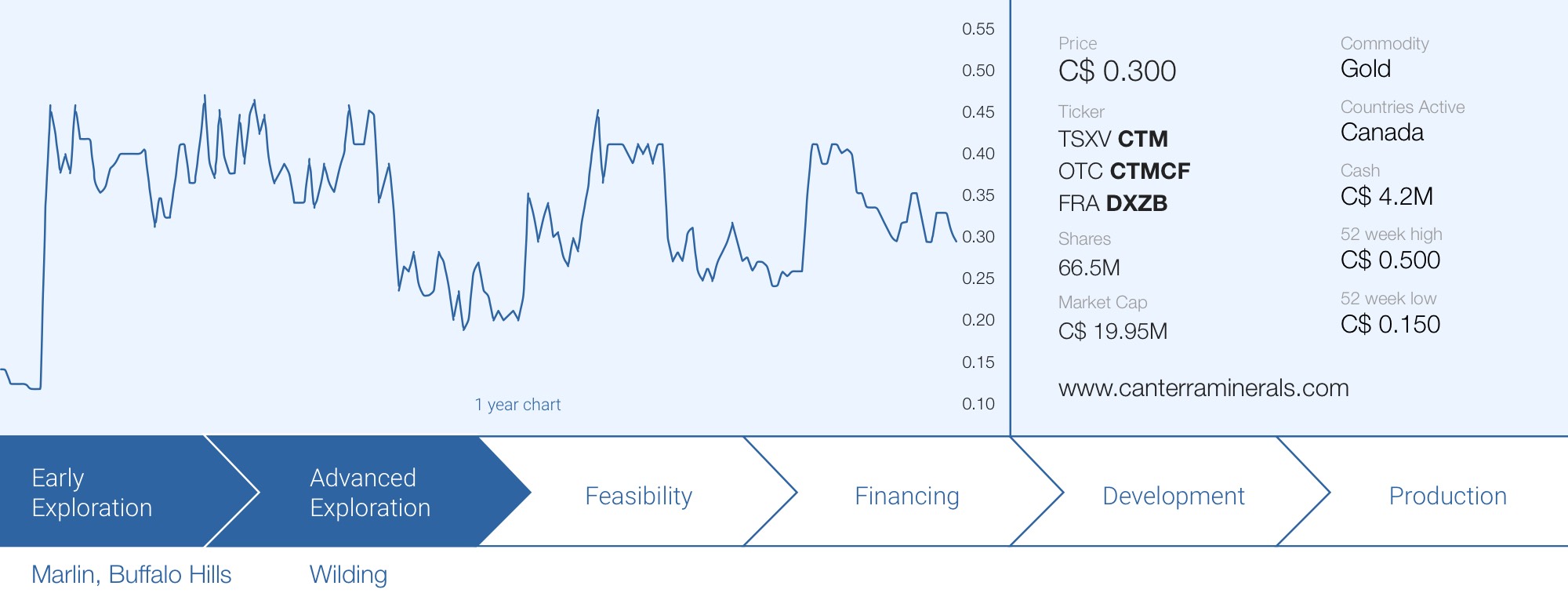
Canterra Minerals (CTM.V) announced a surprising acquisition in September as the company acquired four different projects from NorZinc (NZC.TO). The location of the projects in Newfoundland makes a lot of sense, and as the acquired assets come with a resource estimate, the transaction clearly is a big step forward for Canterra. The company changed overnight from an early stage exploration company to a resource stage company and although the focus remains on gold, we like the diversification as the newly acquired deposits contain quite a bit of silver and base metals as well.
Canterra still has an enviable cash position of in excess of C$4M and has started a 5,000-meter drill program on its Wilding gold project in Newfoundland. While the drill program is ongoing, Canterra will likely start to figure out a game plan for the newly acquired projects.
We sat down with CEO Christopher Pennimpede to discuss these recent developments.
Sitting down with CEO Chris Pennimpede
Drilling
You released a few exploration updates in the past few weeks. Halfway through September, you announced the field team has outlined several new drill targets at Wilding. Could you perhaps briefly explain your methodology Canterra is applying when it goes into the field and how those targets are being generated?
Absolutely. In the winter drill program we hit gold mineralization in virtually every hole extending two zones (Red Ochre and Elm) and making a new discovery at Dogberry. However, we missed a few key targets that we thought might be there but the orientation we drilled failed to prove them up.
It was clear there is widespread gold mineralization at Wilding, and I keep saying we are seeing the smoke but not the fire. So how to find that fire? Well, we went back to basics. We started with the detailed geophysics that was completed by the past owner, reprocessed it and took care of some issue to come up with better products to target from.
From the geophysics we were able to pick out targets that look like significant structures that may be better suited to see bigger “blow-outs” in gold mineralization. With those targets in hand, summer was spent “groundtruthing” them to try and get some surface rock and soil samples to help refine the target. We moved to trenching where we could but sometimes in Newfoundland the trenches fill in with bog too quickly. At the end of summer, we were in a position to downgrade and upgrade the targets we started out with to drill or no drill. A much shorter answer to your question would have been, geophysics, geochemistry, and boots on the ground to get these new drill targets up to being drill ready.
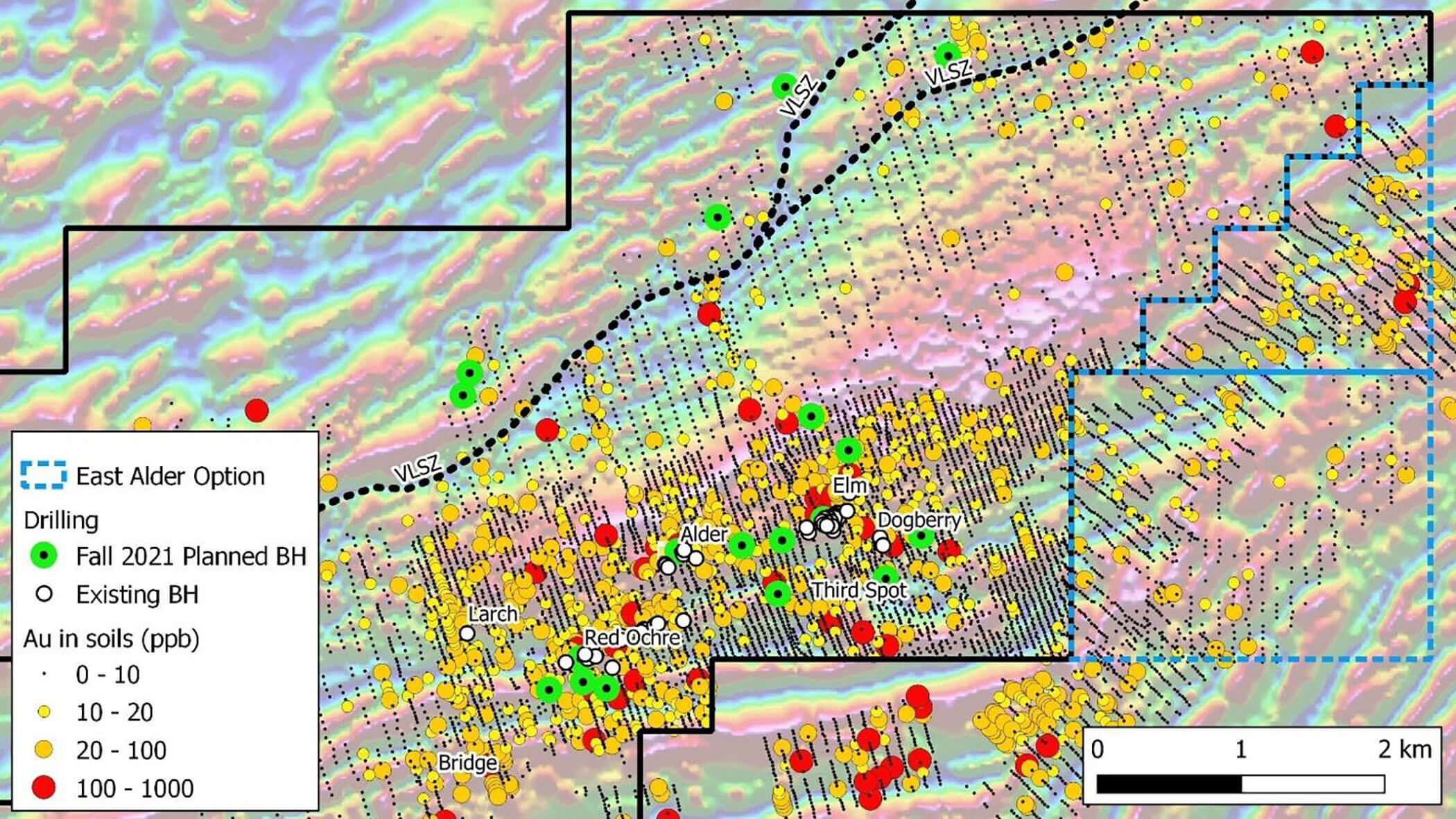
Subsequent to announcing a few new drill targets, you announced the start of a 5,000-meter drill program at Wilding. Are you drilling some of the newly outlined drill targets, or are the 5,000 meters mainly focusing on previously generated targets?
A vast majority at new targets. Even at existing zones we are stepping out in a big way to prove or disprove that the right size potential is there. This drill program is really a put-your-feet-to-the-fire for the existing zones. Do they extend in a significant way? Can we see higher grades (at Elm, Dogberry, Alder – vein hosted) or bigger widths (Red Ochre-disseminated)? The new targets are exciting, and some are real wildcat type of holes where we have the direct analog to Valentine Lake next door (which is owned by Marathon Gold (MOZ.TO)), but there is too much overburden to see any rock to confirm whether there will be gold or not.
With all our summer efforts and reworking the historical data we have come up with some very compelling targets for this fall. Our VP Exploration, Luke Longridge has a great targeting brain.
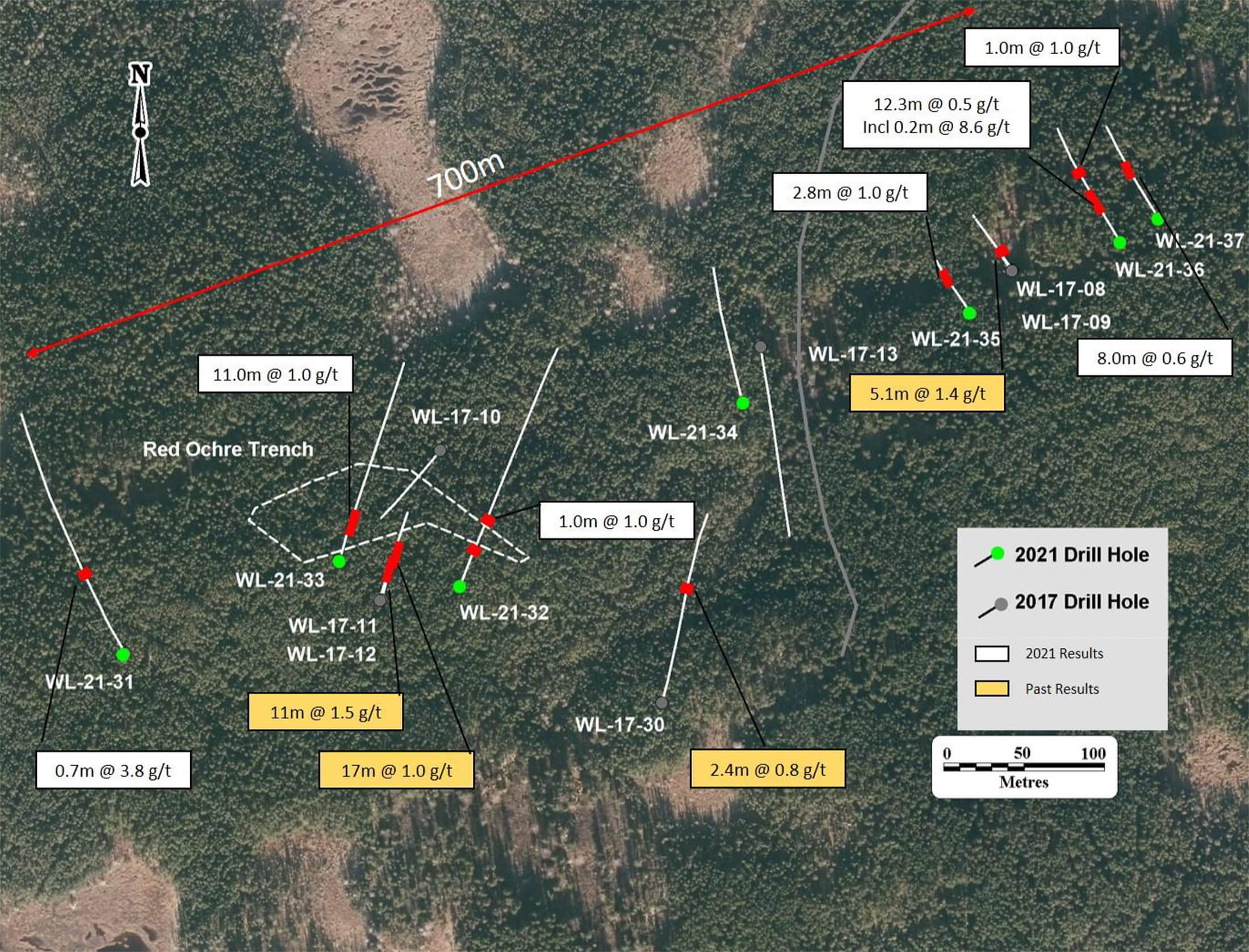
What are you hoping to achieve with the drill program? Are you still just trying to get a better understanding of the project and the mineralized structures, or are you hoping to make quite a bit of progress now?
We are still at the stage of getting a better understanding. At Elm-Alder-Dogberry we think the quartz veins that host gold at each of these zones likely connect between them from our targeting work so we are going to test that with the drill bit. We also see a lot of extensional veining off the main veins into the wall rock so we are going to test the “stacked” vein concept that makes Marathon’s deposits into bulk tonnage deposits that they are.
At Red Ochre, we are stepping out quite a way from the existing holes/trenches targeting a new trench discovery and a few targets that look like Red Ochre but have not been tested. At the end of this program, we will know whether the Elm-Alder-Dogberry and Red Ochre Zones are going to be of significant size to continue drilling. Also, we will hopefully be able to point towards a Marathon like setting in the northern part of the project, which currently has our team most excited. It is a covered target but looks just like Marathon’s deposits in the geophysics and soil results.
What this program won’t do is address the potential on the western part of the project that adjoins Marathon. We are just now starting to see the first ever surface work results come back from that previously unexplored area. So in the unlikely event we completely miss in the east part of Wilding we will still have drill targets in the west for 2022.
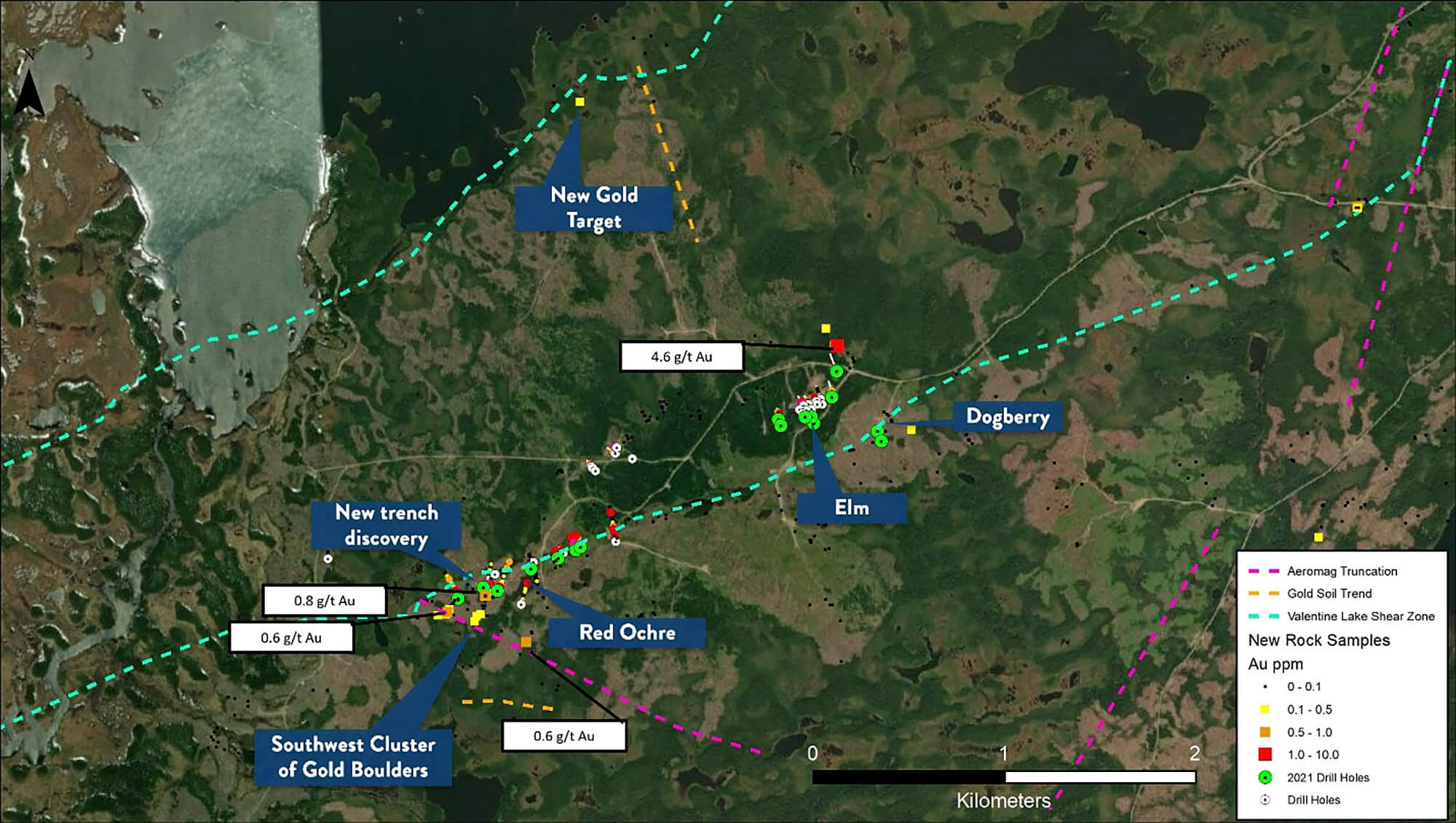
What is the current drill cost per meter? Does the rekindled interest in Newfoundland jack up the prices? What about the exploration costs and perhaps even the ‘human capital’ in general?
In general all-in is typically around C$170-$180/m in NL. That would be a true all-in opposed to some explorers who usually talk about direct drill costs and assay costs. I think its probably the cheapest place to drill in Canada apart from being directly in Val-D’Or or Timmins.
Costs are certainly rising everywhere, we have seen that with bits, casing and core boxes. Labor in Newfoundland continues to be reasonable for now. The summer was tough for human capital especially when combined with COVID restrictions. It was very hard to bring people from outside in and the human capital on the island was taken up fast. Fortunately, we secured a bunch of people early and with our winter program have continue to keep people and drill rigs engaged in our activities as we went from winter-summer-fall.
Overall, the assay costs, drill costs and labour costs are basically as inexpensive as I have ever seen them in Canada even with all the activity. Most Newfoundlanders have to leave Island for good paying jobs and work at Vosieys Bay, Baffinland or the oil sands commuting to and from so any opportunity to stay and work on Island is welcomed!
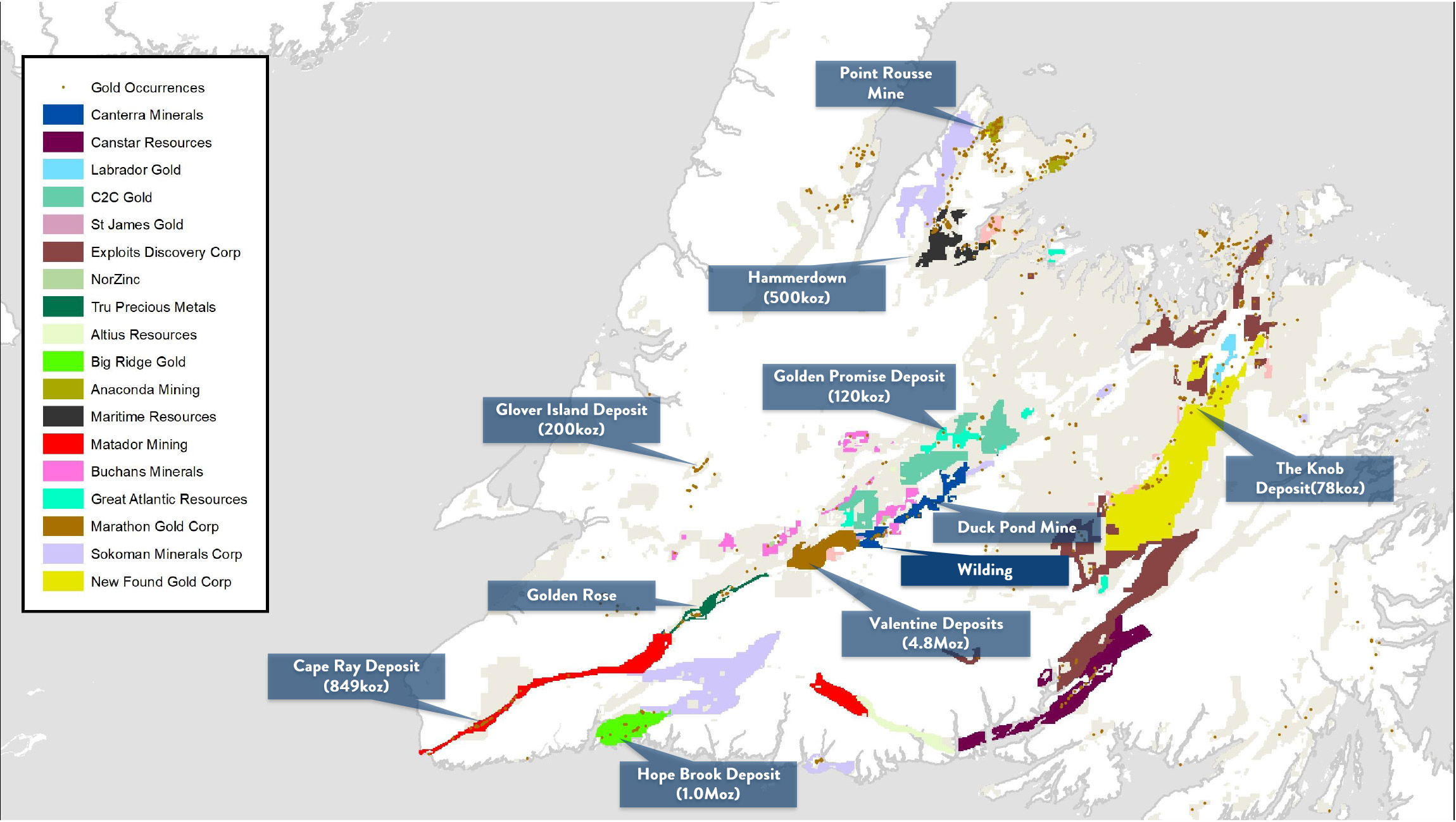
The new acquisitions
You had some very interesting news in October as you acquired a series of projects in Newfoundland, not too far away from your existing Wilding flagship project. How did this transaction come together, and where/how do you see synergy benefits?
We had been evaluating other NL assets since we did the original deal to get Wilding last December. But, with the staking rush there was not much prospective left to stake and the properties we were generally shown to acquire were very, very early stage, off trend (of the Valentine Lake Shear, Dog Bay Line etc.) and didn’t really inspire me at all that there was going to be a significant deposit found.
The acquired assets had been in NorZinc and its predecessor companies since the early 2000s and had been basically not explored in almost 10 years now. Given they are located in the newly minted Central Newfoundland Goldbelt it made sense it add them even from a logistical point of view as they can be accessed from our current base of operations in Millertown. Before this was a gold belt, it really was a base metal camp with the Buchans Mine and Duck Pond Mine and some smaller VMS deposits that saw some small scale mining. Buchans and Duck Pond were very high grade underground VMS deposits and were successful mines.
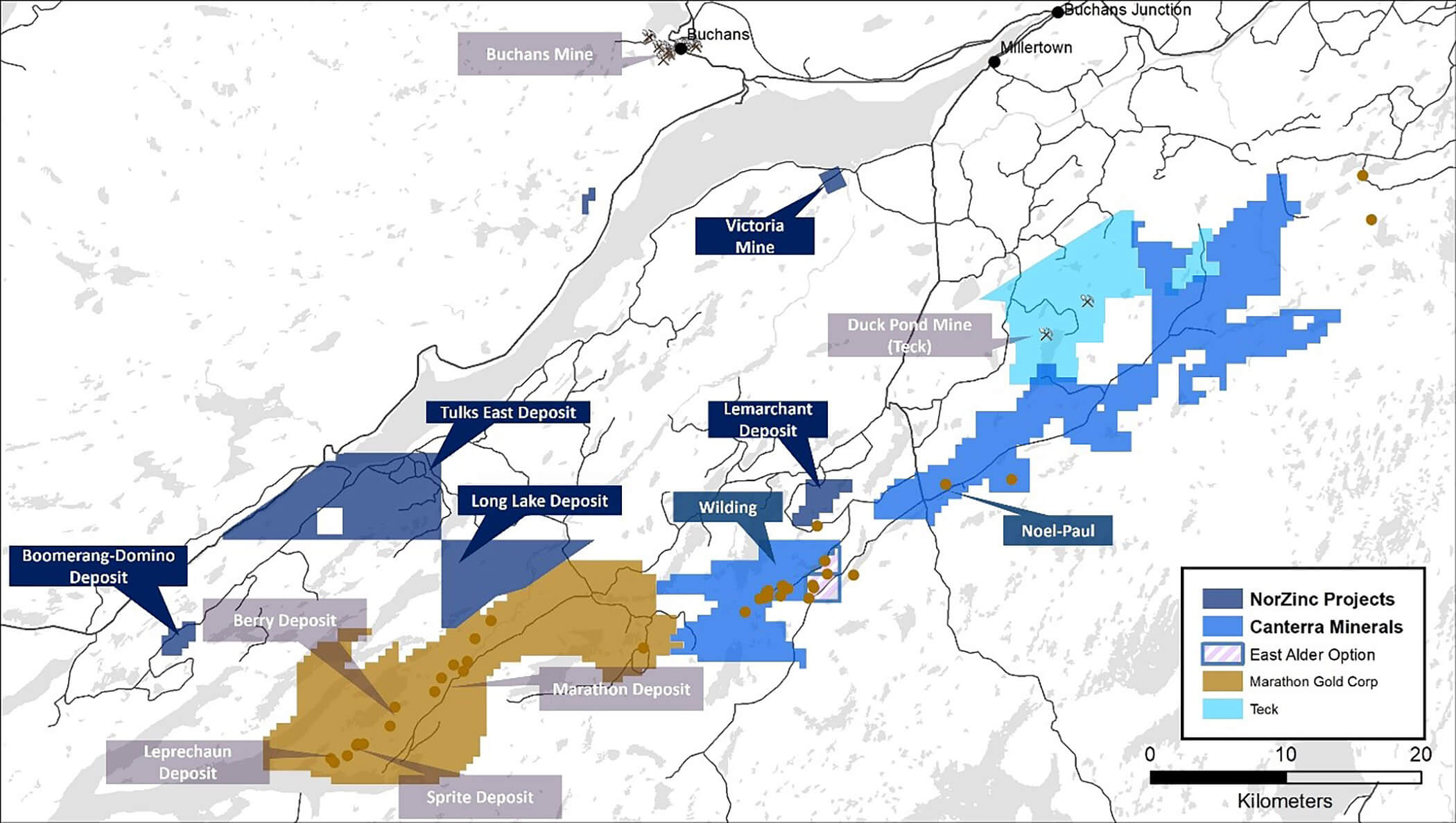
As an explorer, I look for deposits. My goal is to find something that could be a mine one day regardless of metal type. So given all the previous work in the region had successfully come up with base metal mines and our existing properties had segments of the prospective geology that hosts Duck Pond (our project adjoins the southern end of the Duck Pond Mine) it made sense to grab this ground that already has existing deposits to increase our exploration chances to find the next Buchans or Duck Pond. We looked at the data and saw a lot of exploration upside, the past decade or so was very focused on economics as there was a push in the region to combine these deposits with other known VMS deposits and work them into a central processing facility.
So real prize here was to get to explore around the existing deposits looking to make them bigger, which we think there is a strong opportunity to do so. It helps that the assets are more advanced than a lot of the moose pasture we were looking at prior. The NorZinc assets combined with our Wilding project means we are exploring next to and upcoming gold mine (Marathon’s Valentine Lake) and next to existing deposits with high grade ZnEq. That is a great place to be as an exploration geologist as the saying goes “the best place to find mines is next to existing mines”.

Canterra was a gold exploration company and in your acquisition announcement, you used the gold ounces in your headline. But the acquired projects contain so much more than just gold and just to give an example, there’s in excess of 600 million pounds of zinc in the indicated resource category with about 10 million ounces of silver, just to name a few non-gold metals. Does this acquisition signal a shift in strategy, or will the focus on gold remain more important than building out the resources at the newly acquired projects?
Up until our Newfoundland acquisition and before my tenure, Canterra was a Diamond explorer but our Chairman, Randy Turner has had as much success exploring for gold and other metals as diamonds. I think our name is important, Canterra Minerals, as it shows we are out there focused on finding metal deposits. When you enter a historically base metal dominated “camp” you would be quite foolish if you only focused on gold. In fact, the whole reason Marathon was not discovered until relatively recently is everyone was focused on base metals and didn’t bother to assay for gold. Buchans was mined for almost 100 years netting 17Mt of 25% ZnEq (thanks to excellentt grades of Gold and Copper), Duck Pond operated in the modern mining era for 7 productive years for 5.1Mt at 24% ZnEq so it is not a shift in strategy, but more of identifying an opportunity to find a mineable deposit. For the moment we are completely focused on Wilding and our earlier stage Noel-Paul project and are in the middle of a fall drill program at Wilding.
These are gold focused projects as they cover the northeast extension of the Valentine Lake Shear Zone, which hosts all of Marathon’s deposits and the same structure is responsible for the Cape Ray deposit that Matador is advancing further south. However, the Noel-Paul project we have covers part of the Tally Pond volcanics as well and that suite of rocks hosts the Duck Pond Mine so we already have been ensuring we are looking for possible Zn-Cu-Pb signals that may point towards a Duck Pond like VMS deposits there. Going forward we will continue to push Wilding and Noel-Paul ahead searching for the next Marathon Gold, while at the same time evaluating where best to extend or make a new discovery at these newly acquired projects. The deposits at this point don’t work as a standalone mine so we have to identify where there might be overlooked places to increase tonnage.
It’s a new acquisition and you are obviously focusing on the Wilding project now. But what would be your near-term steps to unlock value at the newly acquired projects?
There is a vast amount of data for all the projects. So it is a really data heavy environment, which is good but it also means we will need more time to go through the data to properly access the best opportunities. From our DD we have several initial ideas to expand the resource base and many pure exploration targets that we identified and previous operates identified but did not have capacity to drill. So the first steps will be distilling the data to promote or demote our targets and then work them towards drilling in 2022.
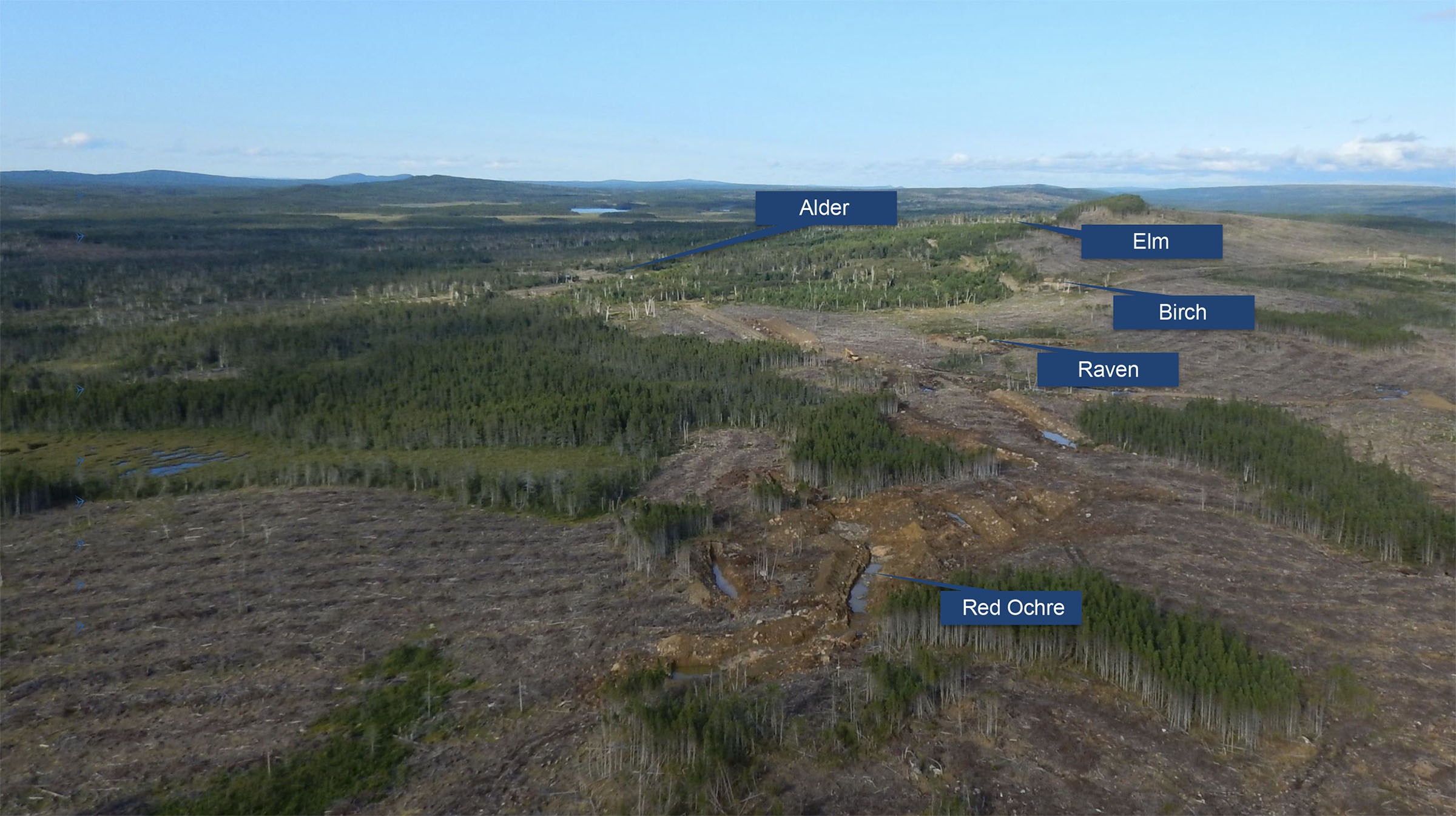
Corporate
You raised money in June and this has put you in a good position for the H2 2021 and potentially even the 2022 exploration programs. How much cash do you have left and where will it take you?
Right now we are at approximately C$4.2M, but drilling so that number will continue to go downwards. By year end we should have spent all of our initial flow through of $2.75M. We should be fully funded for winter a 2022 drill program. In other words, we will be in good shape for another winter drill program.
Readers may know you from your involvement in Contact Gold (C.V), but you are now dedicating 100% of your time to Canterra Minerals, right?
That is right. With the acquisition of these new assets CTM becomes a much bigger Company with more moving parts and will be all hands on deck to keep advancing all of our assets.
Any parting thoughts?
Acquiring these new assets puts Canterra in a strong position to be successful and backs up our valuation with resources. It takes some of the risk out of exploration as we know deposits already exist at each project.
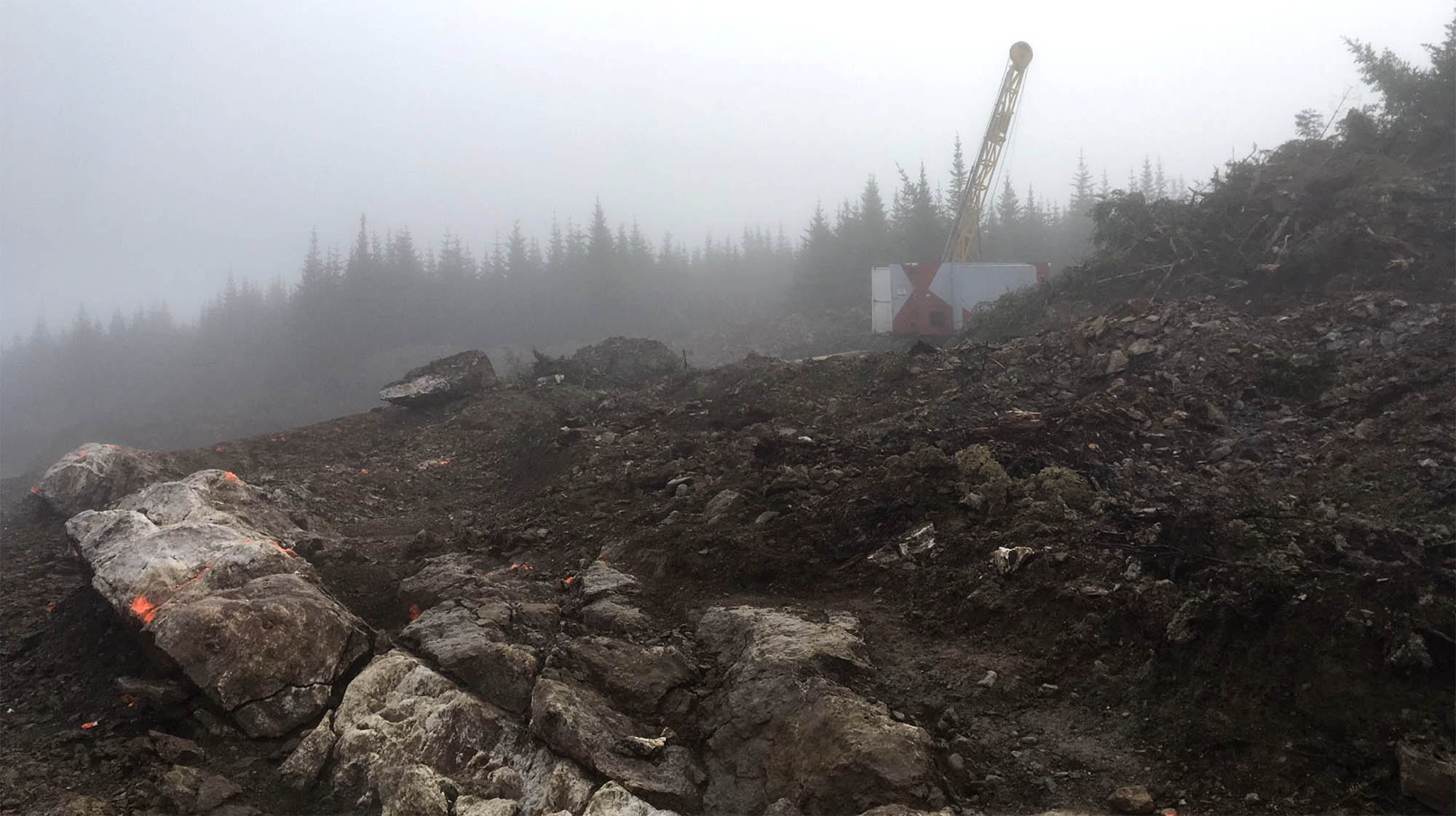
Conclusion
The overnight metamorphosis of Canterra Minerals is quite interesting. Although the company clearly still believes in its flagship Wilding project as a 5,000-meter drill program is in full swing now, we like the acquisition of the four projects from NorZinc as this creates a whole new dimension for Canterra. While the acquired projects still lack the critical mass, keep in mind the majority of the projects haven’t been explored for about a decade (and longer) so there likely is some low-hanging fruit ready to be picked. This does not guarantee the projects will meet the thresholds required to even consider developing the asset, but the Canterra team seems to be sufficiently hungry to hit the ground running.
Assay results from Wilding can be expected towards the end of the year although it’s possible the company will release the results from the drill program in batches.
Disclosure: Canterra Minerals is not a sponsor of the website. The author has a long position in Canterra Minerals. Please read our disclaimer.
